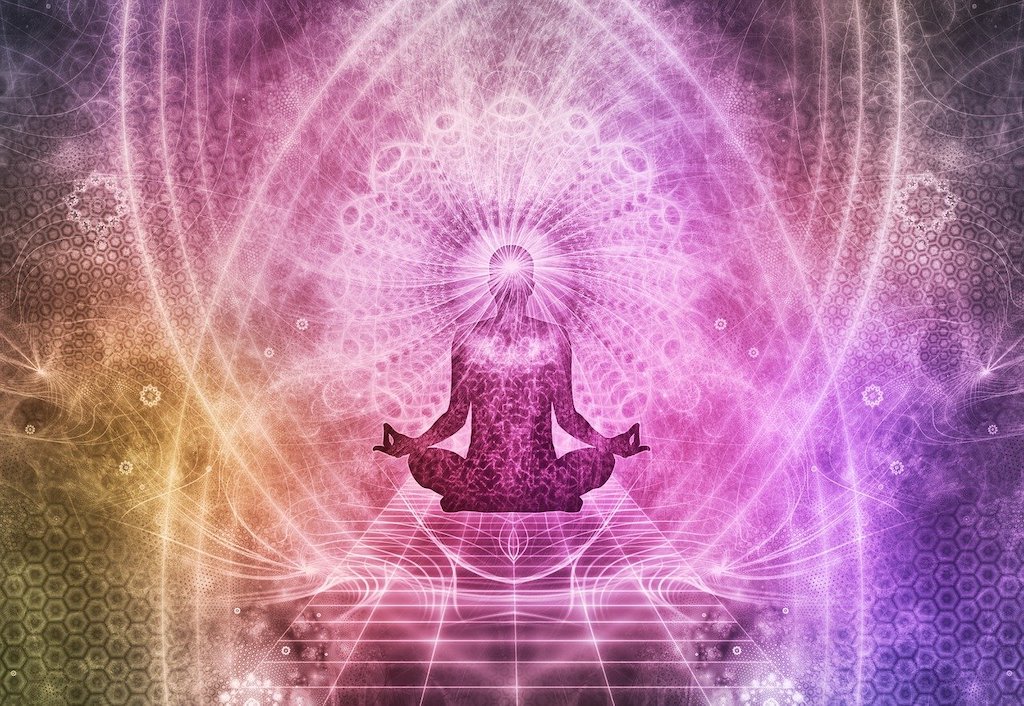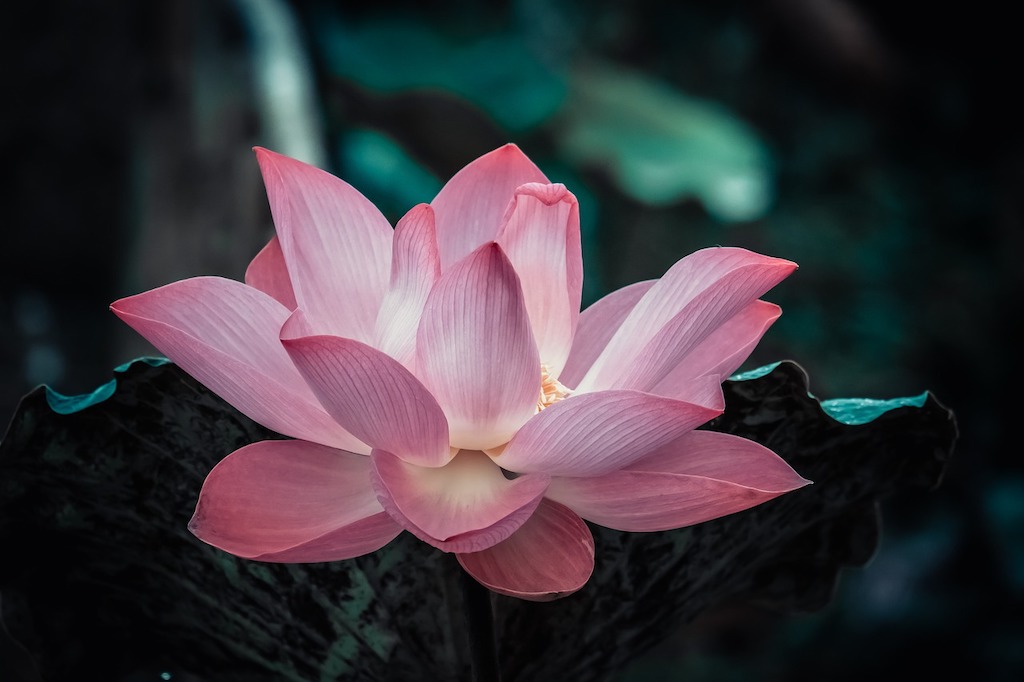
Ayurveda literally means ‘science of life’. It is one of India’s many indigenous healing traditions. But it is not a science in the western sense of the word. Very much unlike western science, Ayurveda is said to have been divinely revealed.
Ayurveda has ancient roots, dating back at least 5000 years. According to legend, one day, a long, long time ago, the wisest Brahmans came together to meditate on matters of sickness and health, nutrition and well-being. And thus, the Ayurvedic philosophy and the principles of health were conceived in their entirety.
Balance as a dynamic principle
Ayurveda’s fundamental premise is the unity of body, mind and spirit and the interconnectedness of all life. Health means ‘wholeness’, and the key to health is a balanced lifestyle.
A balanced lifestyle means moderation in all things – physical, mental and spiritual. Imbalance in any sphere of life will eventually affect all aspects of the body-mind. A balanced diet is just as important as being happy and physically fulfilled.
But we are constantly exposed to an interplay of forces that can easily upset our balance. To maintain balance means having to dynamically adapt to ever-changing circumstances.
Elemental Balance
These interacting forces were conceived as the ever-changing dynamic expression of the elements (fire, air, earth, water and ether).
The Ancients regarded the elements as ‘qualia’. When they spoke of fire, they did not mean an actual bonfire but the essence of fire, expressed in the heat, the flickering flames, and their all-consuming power. The construct of the elements is based on a phenomenological way of perceiving and interpreting inner and outer reality.
Everything in the universe has its own elemental signature composed of a specific energetic pattern. And all living things are interconnected. Herbal remedies and are employed to correct the energetic imbalance.

Constitutional types
Human beings are categorized into three basic constitutional types known as doshas: Vata, Pitta, and Kapha. Although all three doshas are present in every person, one or two usually dominate.
Vata
Vata is associated with the elements of air and ether.
It implies movement and changeability, and its quality is cold and dry. Excessive Vata energy manifests as nervousness and anxiety. Vata individuals find it hard to sit still. They are always on the move. Their minds are quick and active, but they do not always retain information very well. The skin or hair tend to be dry and brittle, and they often complain about cold hands and feet. Their body frame tends to be light and skinny.
Pitta
Pitta is associated with the elements of fire and water. It expresses itself as the assimilation of food and the heat of metabolic processes. It describes a hot temperament that requires plenty of food to fuel the metabolism. The intensity of the inner fire tends to turn Pitta types’ hair grey or causes them to lose it at a young age. The hair and skin are often oily, and Pitta-individuals frequently have strong body odours. Their cognition and memory are usually sharp, but they often have a perfectionist streak. This can lead to a judgmental and over-critical attitude towards others. Pitta-types often have a need to dominate and control.
Kapha
Kapha is associated with the elements of water and earth. It represents structure and substance. In the body, it finds expression in the bones and connective tissues. Kapha energy is heavy and cold. Kapha individuals have heavy body frames and a tendency to put on weight. They move and think slowly and can be lethargic. The skin may feel cold and clammy, and they often have a sweet tooth. Kapha individuals can be kind and compassionate, but they may be overly attached and suffer from jealousy.
We are constantly subject to external forces that can unbalance our equilibrium. Ayurveda aims to rectify symptoms of dosha imbalance. Its tools are mental and physical exercises (e.g. meditation, yoga), medicinal herbs, and appropriate nutrition.
 Foods are also categorized into three basic types:
Foods are also categorized into three basic types:
- Sattva – milk and plant products, mild flavours
- Raja – hot and spicy food, meat
- Tamas – denaturalized foods, canned food, fast food, alcohol
Whether foods are healthy or harmful depends on the person’s dosha constitution.
Correcting excessive Vata energy
To balance excessive Vata energy, eat cooked food that is oily, heavy and warm, and preferably sweet, sour or salty. Refined sugars and yeast should be avoided. Vegetables of the cabbage and potato family are not recommended. Raw vegetables are okay, but should be marinated or served with a dip or dressing. Avoid just grabbing food on the go. Eat slowly and keep regular dinner times.
Correcting excessive Pitta energy
Excessive Pitta energy can be balanced by eating a predominantly vegetarian diet consisting of plenty of fruit, veggies and grains. Overly spicy or acidic foods and excessive amounts of salt, oil or alcohol should be avoided.
Correcting excessive Kapha energy
To balance excessive Kapha energy, eat light, fresh, raw vegetables and fruit. Sweets, creamy foods, nuts and heavy carbohydrates should be avoided. Spicy foods are beneficial as they stimulate metabolic processes. But meat, dairy products and citrus fruits and sweet, sour and salty foods should be avoided.
Obviously, these are only the most rudimentary guidelines. To learn more about the principles of Ayurvedic nutrition, see the recommended books or find an Ayurvedic practitioner near you.
Other causes of disease
Ayurveda also recognizes other causes of ill-health that call for different types of treatment.
Accidents:
Physical or mechanical injuries, such as broken bones, call for surgery.
Inflammation:
Infectious diseases and organ dysfunction are mostly treated with herbs and other curative substances.
Afflictions of the soul:
Emotional issues such as fear, hatred, apathy, or jealousy.
Such issues are treated therapeutically. (Aromatherapy, colour therapy, music therapy, charms, dance etc.)
Natural causes:
Old age, hunger and similar are treated with spiritual measures such as meditation, prayer and spiritual practices.
Western science has long struggled to understand these ancient and often confusing systems of correspondences and typologies. They are often labelled unscientific and quickly dismissed. Such philosophies are considered mumbo-jumbo simply because they do not fit the reductionist paradigm. Some modern Ayurvedic physicians have attempted to translate their system into western concepts to gain more acceptance and make it easier to understand.
But Ayurveda has gained popularity in recent years. -no longer a ‘fringe’ therapy, Ayurveda has a firm place in the field of alternative and complementary therapies. No one needs to travel halfway across the world to consult an Ayurvedic practitioner (although many do!)
Can culturally alien medical practices be effective, regardless of where and to whom they are applied?
This question deserves consideration.
In rural India, hygienic conditions, even at hospitals, cannot be compared to those in the West. Under such sanitary conditions, it is not always possible to administrate injections safely. At the same time, pharmaceuticals may be regarded with such awe that they are overprescribed, leading to unwanted results.
Although western medicine is universally considered superior to indigenous healing systems, it can fail if the environmental conditions are inadequate. Likewise, Ayurvedic medicine, in the hands of insufficiently trained practitioners, may not produce the expected results. Neither system can simply be transposed to another culture without taking systemic factors into account.
Ayurveda has been practised successfully for thousands of years. But it takes years of study, including the philosophical premise on which it is based. Reducing it to some basic principles does not do it justice and will not produce the desired results.
Lotus image by Phu Nguyen from Pixabay
Ayurvedic herbs image by Seksak Kerdkanno from Pixabay
#Ads
Disclosure: As an Amazon Associate, I earn from qualifying purchases on Amazon and other affiliate sites.


